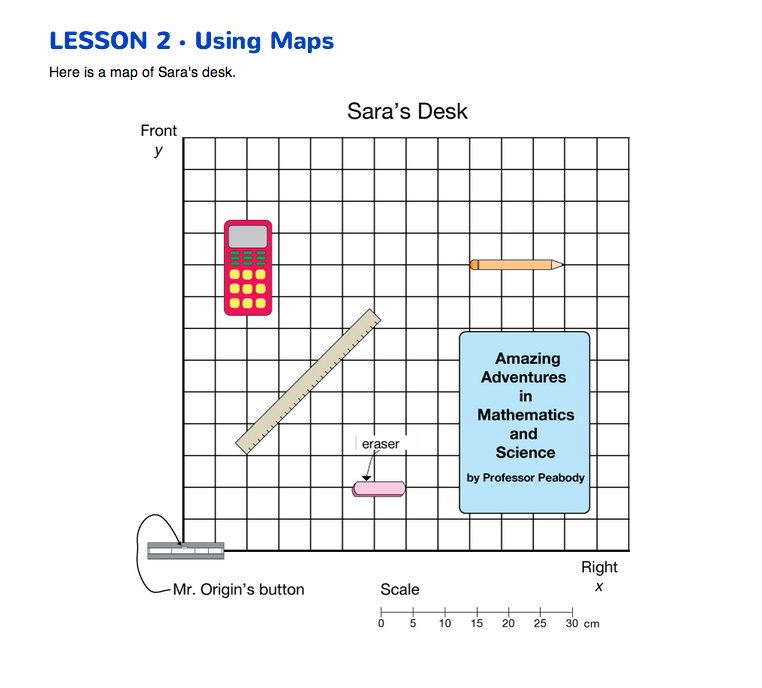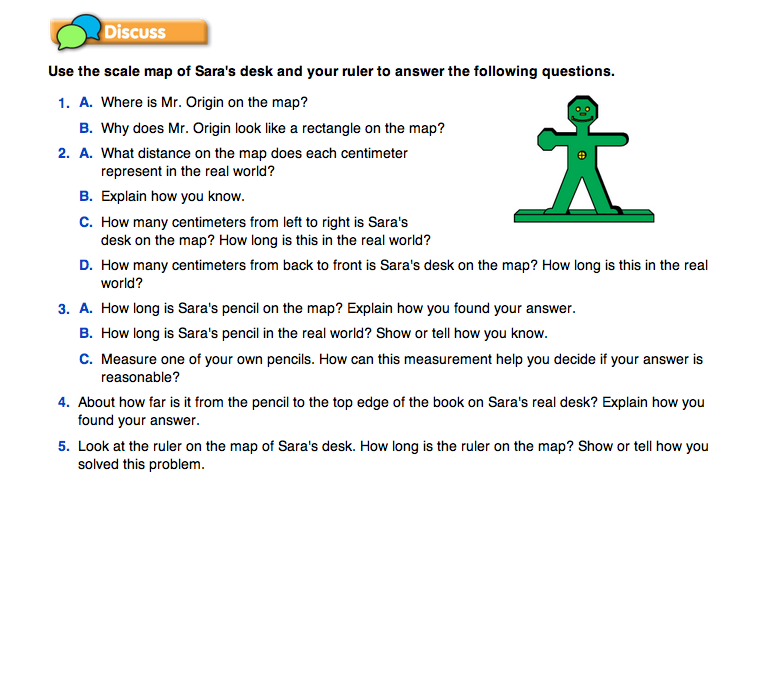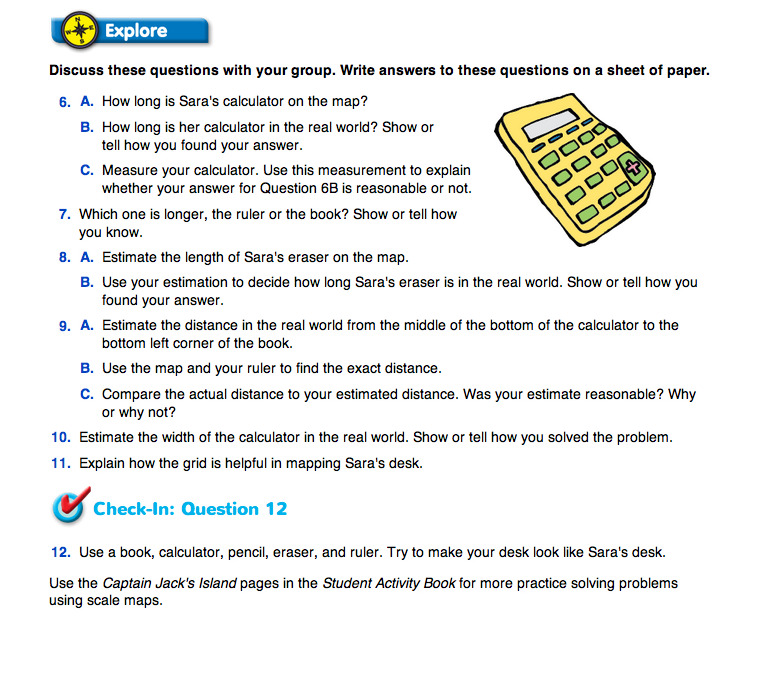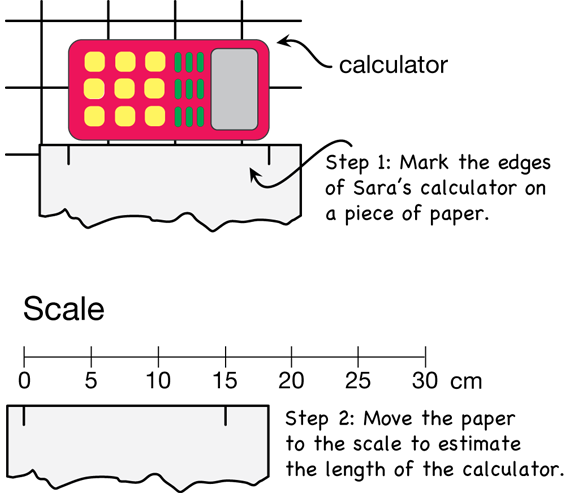Using Maps
Est. Class Sessions: 2Developing the Lesson
Part 1. Sara's Desk
Locate Objects on a Scale Map. Ask students to turn to the Using Maps pages in the Student Guide. The map on the first page is a scale map. This scale map is drawn to scale on Centimeter Grid Paper with 1 centimeter on the map equal to 5 centimeters in the real world. This map shows a view of Sara's desk from above and Mr. Origin is located in the lower left corner of the map.
Begin the discussion by reviewing the names of the axes. The horizontal axis is the left/right or x-axis. The vertical axis is the front/back or y-axis. The map shows that the objects on the desk are to the right and front of Mr. Origin.
Allow time for students to study the map. Use discussion prompts to ask students to describe where objects are in relation to Mr. Origin and to one another. Encourage them to use the directional words right and left to help them understand the movement along the x-axis and front and back to describe the movement along the y-axis. For example, the map shows that the calculator is to the right and front of Mr. Origin.
Ask:
Continue this type of questioning until students are comfortable describing the location of the objects on the map.
Use a Scale Map. After students are comfortable describing the location of objects on the map, use Questions 1–5 in the Student Guide to guide a class discussion about using a scale map. Students will use the scale shown on the map and rulers to measure their own maps. A display of Sara's Desk on the Using Maps page of the Student Guide can also be used to guide the discussion.
In Question 1A–B, students find the location of Mr. Origin on the map. He is standing directly over the (0,0) point, or the origin for this map. Students should recognize that since this map shows a view from above Sara's desk, when you look down you see Mr. Origin's base, which is a rectangle. In Questions 2A–B, students use the scale to find that one centimeter on the map stands for five centimeters in the real world. Students can multiply by five or skip count by fives to answer Questions 2C–D. Students continue to use the scale map and their rulers to answer Questions 3–5.
Students may initially be confused when they try to answer Question 5. They may think the ruler is four centimeters long if they try to answer by counting the number of centimeter squares the ruler crosses on the diagonal. Use the discussion prompts to guide a discussion of Question 5 and to clarify misconceptions.
Ask:
Divide students into pairs or small groups to work on Questions 6–11. Each group of students can share a map of Sara's desk and a centimeter ruler as they discuss each question. The most common error made when answering these questions is forgetting to use the scale. For example, Question 6B asks students to find the length of Sara's calculator in the real world. Since each centimeter on the map grid or on a ruler represents 5 centimeters on her desk, Sara's real calculator is 5 × 3 cm = 15 cm long. Another way to see this is to mark the ends of Sara's calculator along the edge of a piece of paper and then move the paper over to the map scale. See Figure 1.
Ask students to share their responses to Question 11. Students should recognize that using a grid on the map makes it easier to measure and to see the location of each item in relationship to the other items on the map.
Check–In: Question 12 asks students to arrange their desks like Sara's using similar items. Students can complete this task independently or they can continue to work with their partner or small group. To complete this task, students will need a Mr. Origin, a ruler, a calculator, a pencil, an eraser, and a book. Stress that the reproduction should be similar to Sara's desk but measurements do not have to be exact. Although the first priority is the position of the objects, observe students as they work, encourage them to use their ruler and the map to more accurately place each object.
















